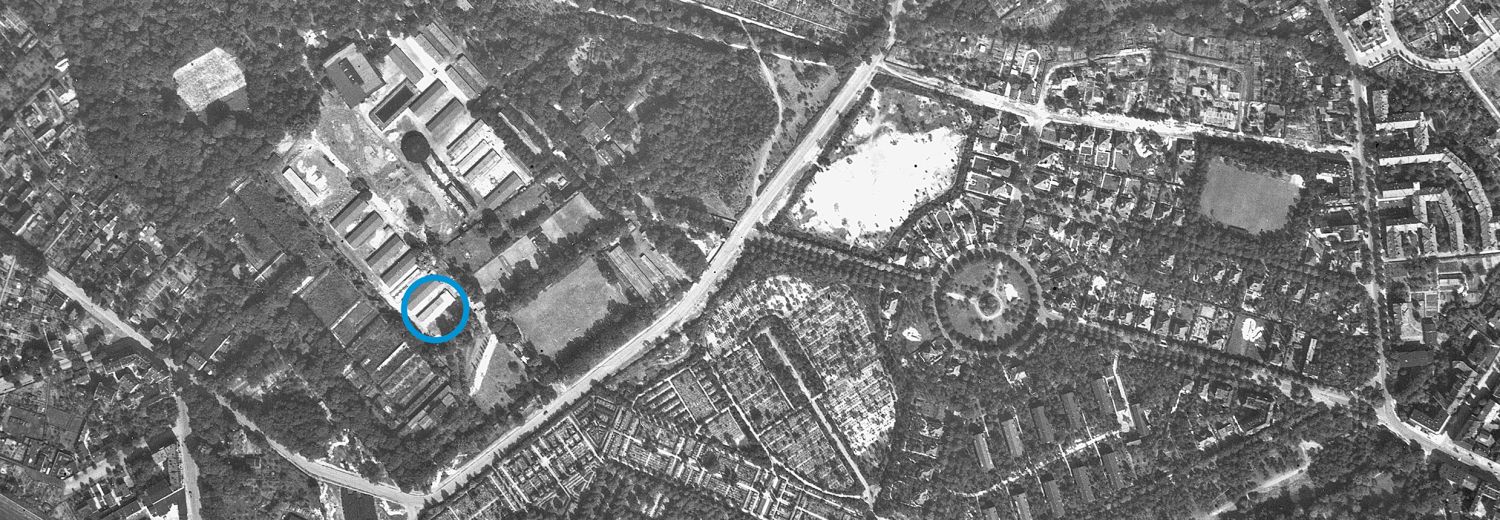“A lot has changed here [in Schönholz], a lot. I myself feel that I’m turning to stone. I go to work day after day, although there are times when I feel powerless. When I go to bed, I close my eyes, I see everything as if through a cloud, and it brings my loved ones closer to me.”
Stanisława B., forced laborer at the Luna-Lager labor camp, December 5, 1942
This bunker is the last remaining building of what was known as the Luna-Lager labor camp.
From 1940 to 1945, Schönholzer Heide was the site of the second largest forced labor camp in Berlin. People from the Soviet Union, Poland, France, Croatia and Italy were forcibly brought here and made to work for Deutsche Waffen- und Munitionsfabriken AG and the nearby Bergmann-Elektrizitätswerke, among others.
Up until the beginning of the Second World War, the “Traumland” amusement park was located here. Foreign workers were initially housed in barracks between bumper cars and merry-go-rounds. A two-meter-high barbed wire fence enclosed the camp.
The bunker may have served as a makeshift shelter from air raids. A ground anchor near the building suggests that it was also used as a communications bunker.
After liberation by the Red Army in 1945, Soviet soldiers were housed in the camp barracks.
After 1945, the Luna bunker was used to store food, which is why it is also known as the “Potato Bunker.” It is also known to have been used in the GDR for an unsuccessful attempt to grow mushrooms. Some remnants of a heating system have been preserved.
Today, the bunker building is home to Daubenton’s bats (Myotis daubentonii) and brown long-eared bats (Plecotus auritus).
Entering the building is prohibited.


